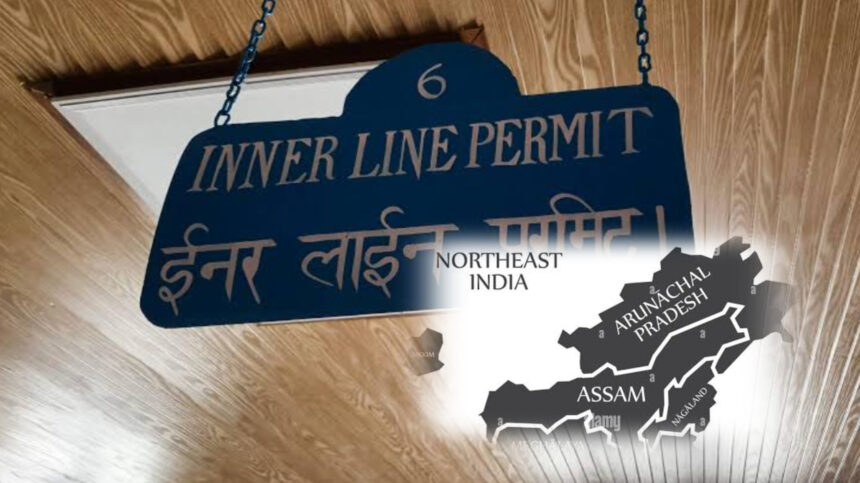By: Dimapur Today Policy Desk
Published: August 5, 2025
In the northeastern frontier of India, the concept of restricted entry and regulated movement is not merely administrative—it’s deeply historical. Known as the Inner Line Permit (ILP), this regulation continues to shape movement, identity, and governance in four Indian states: Arunachal Pradesh, Nagaland, Mizoram, and Manipur.
The Inner Line Permit system was introduced by the British colonial administration through the Bengal Eastern Frontier Regulation (BEFR) of 1873.
It was intended to protect the commercial interests of the British in tea, oil, and timber industries, shield frontier tribes from outside interference, and prevent conflict between local communities and outsiders. Under this law, British subjects (and later Indian citizens) were prohibited from entering certain “Scheduled Districts” without a special permit.
The “Inner Line” was a conceptual boundary separating the governed plains from tribal hill areas. No one could cross it without prior approval. This idea of preserving cultural and territorial autonomy continues even today under Indian law.
After Independence in 1947, the Indian Constitution allowed certain colonial laws to continue under Article 372. The BEFR, 1873 was not repealed and the ILP continued in the Northeast due to its importance in protecting tribal land, identity, and customs.
Over the years, the ILP system was formally implemented in the following states:
- Arunachal Pradesh (1983)
- Nagaland (1963)
- Mizoram (1980s; formalized in 1987)
- Manipur (2019)
Today, Indian citizens from outside these states must obtain an ILP before entering. Foreigners are governed by separate rules under the Protected Area Permit (PAP) regime.
Supporters argue that the ILP is necessary to preserve indigenous culture, regulate immigration, prevent exploitation of land and resources, and protect local employment. Many communities in the Northeast feel demographically threatened and see the ILP as a constitutional safeguard.
Critics, however, argue that the ILP restricts the freedom of movement guaranteed under Article 19 of the Constitution. It is also said to discourage tourism, limit economic investment, and create barriers between regions of the same country.
Nevertheless, governments—both at the state and central levels—have largely upheld the ILP system, acknowledging its role in maintaining peace and autonomy in sensitive border areas.
In recent years, states have digitized the process, offering online ILP applications. There have also been debates about extending or relaxing ILP provisions for tourists and business travelers in designated zones.
During the protests against the Citizenship Amendment Act (CAA) in 2019–20, the ILP gained renewed attention. The central government extended ILP to Manipur as a measure to address fears of demographic change.
The Inner Line Permit is more than a regulatory tool—it is a legacy of colonial governance, a response to tribal concerns, and a symbol of the delicate balance between development and cultural preservation.
Its future will depend on how India manages integration and autonomy together, especially in a region as diverse and politically sensitive as the Northeast.
Dimapur Today will continue to cover the evolving conversation around constitutional safeguards, tribal rights, and regional policy in the Northeast.





